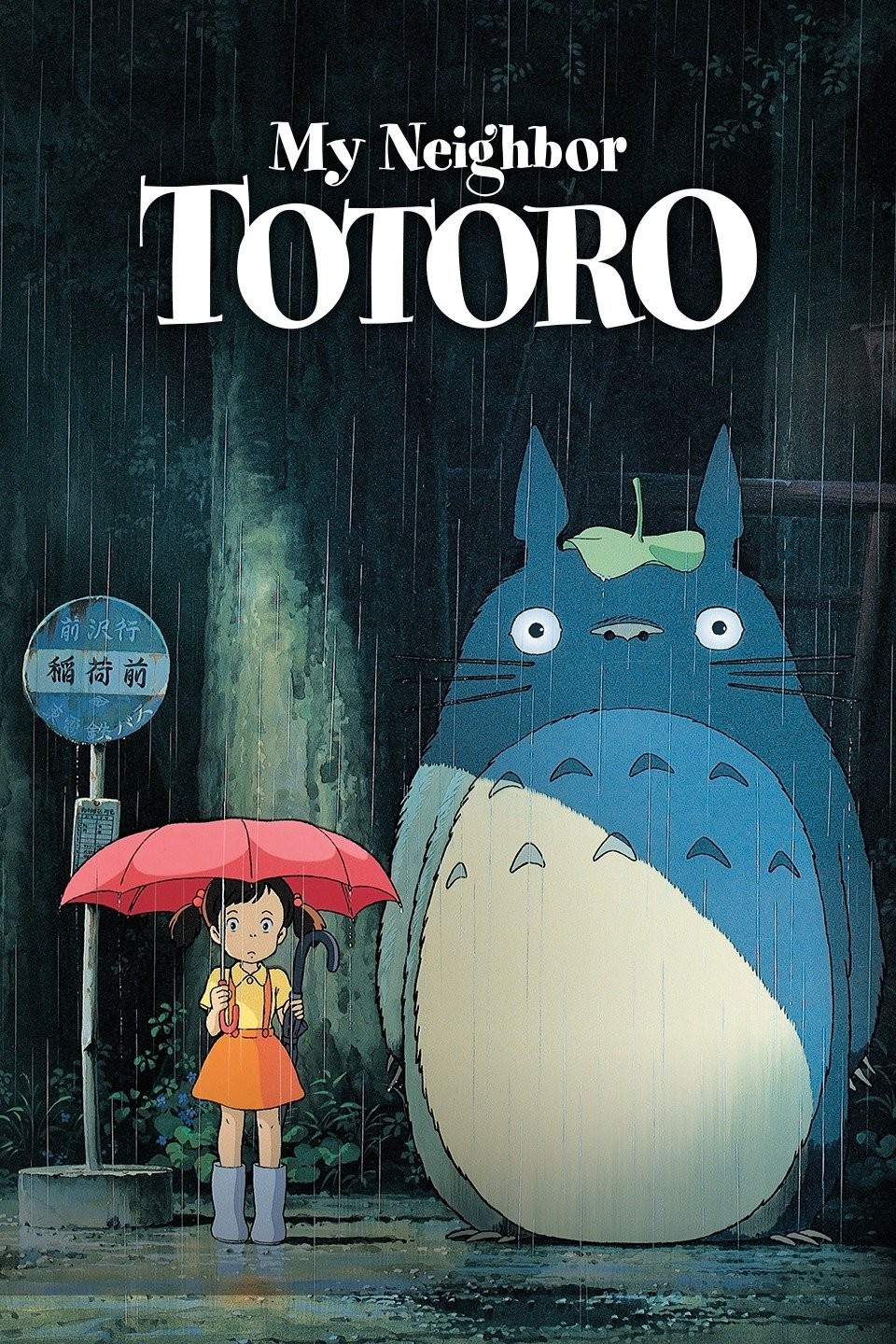My Neighbour Totoro (1988)-Grow, O Tree, Grow (1988)
Filed under: Animation, 1980s, Anime, Color, Japan, Mayazaki Hayao, Studio Ghibli, Technicolor,
My Neighbour Totoro (1988)-Grow, O Tree, Grow

Poster of My Neighbour Totoro
Directed by:Miyazaki Hayao
Producers:Toru Hara
Animated by:Junko Adachi
Tomoko Asahi
Phil Austin
Masaaki Endô
Yuka Endô
Yôko Fujino
Kazuko Fukutomi
Makiko Futaki
Andrew Gof
Hiromi Hanawa
Tokuko Harada
Keiichiro Hattori
Kyôko Higurashi
Akiko Ishii
Kôji Itô
Norichika Iwakiri
Emiko Iwayanagi
Toyoko Kajio
Yoshinori Kanada
Toshio Kawaguchi
Tadateru Kawamura
Naoki Kitamura
Komasa
Katsuya Kondô
Masaki Kudô
Yuriko Kudô
Yuki Kyôno
Yukari Maeda
Kiyoko Makita
Riwako Matsui
Nagisa Miyazaki
Takayo Mizutani
Chiyomi Morisawa
Shinji Morohashi
Mamoru Murao
Yoshiko Murata
Jun’ichi Nagano
Miwako Nakamura
Kenji Narita
Rie Niidome
Michiko Nishimaki
Miyoko Oka
Kazumi Okabe
Masakazu Okada
Tensai Okamura
Masayuki Ota
Kazutaka Ozaki
Masako Sakano
Yoshiharu Satô
Yorimi Sawauchi
Reiko Shibuya
Ritsuko Shiina
Nobumasa Shinwaka
Masako Shinohara
Reiko Suzuki
Yasuko Tachiki
Hideko Tagawa
Yûki Takagi
Aiko Takahashi
Naomi Takahashi
Hiroe Takekura
Naoko Takenawa
Natsue Tanaka
Makoto Tanaka
Ritsuko Tanaka
Tsukasa Tannai
Hitomi Tateno
Teruyo Tateyama
Akiko teshima
Mayumi Watabe
Keiko Watanabe
Nobuko Watanabe
Aki Yamagata
Hirômi Yamakwa
Tsuyoshi Yamamoto
Noriko Yamamura
Fumi Yamane
Yukari Yamaura
Toki Yanagi
Michiyo Yasuda
Fujino Yonei
Hajime Yoshida
Hisako Yoshida
Michiko Ôide
Naoko Ôkawa
Michiko Ôta
Kumiko Ôtani
Shinji Ôtsuka
Joe Hisaishi
Layouts by:Hisao Shirai
Backgrounds by:Junko Ina
Hidetoshi Kaneko
Shinji Kimura
Tsuyoshi Matsumuro
Satoshi Matsuoka
Yuko Matsuura
Toshio Nozaki
Makoto Shiraishi
Kiyoko Sugawara
Yôji Takeshige
Keiko Tamura
Sadahiko Tanaka
Akira Yamakawa
Masaki Yoshizaki
Kiyomi Ôta
Nobuhiro Ôtsuka
Studio Ghibli
Release date:16/04/1988
Running time:1h26min (full version), 2min (clip)
Color process:Technicolor
Synopsis
As two young sisters moved to the countryside to visit their mother with long-term sickness, they encountered animistic creatures, including the well-known Totoro, whom they befriended. The sisters underwent a series of adventures with Totoro as they enjoyed their childhood full of imagination. The clip shows the two sisters helping Totoro to summon a huge tree emerging out of the soil.
Reception:
Focusing on the passage from childhood to adulthood of two girls, My Neighbour Totoro partially reflects on director Miyazaki Hayao’s own childhood, when he struggled with loneliness as his mother was diagnosed with a life-threatening disease (Greenberg 120; Miyazaki 423). Miyazaki decided to make the protagonists girls instead of boys because he thought the story would otherwise overlap too much with his childhood experience and become too pitiful, concerning that he and his mother were overly self-conscious to act intimately during hospital visits (Miyazaki 427).
In order to make the story more warm-hearted, Miyazaki portrayed familial love by showing the mother brushing the hair of Satsuki, the older sister, while embracing Mei, the younger sister, in arms (Ibid.). Miyazaki associated childhood’s joy with wild nature, forming the image of the natural spirit Totoro, who was also the embodiment of childhood fantasy, helping the two sisters overcome the fear of losing their mother, accompanied by a forced entrance to adulthood of harshness (Greenberg 121).
Animism, a belief in spiritual essence residing in everything and everywhere, is very noticeable. Miyazaki practiced a dissociation from ideological Shinto, Japan’s native animistic religion characterized by large-scale shrines and the administrative apparatus of the modern state, while emphasizing locality and connection with nature in Totoro, which features local shrines with minor decoration situated among nature (Yoneyama 254).
My Neighbour Totoro received critical acclaim both domestically and internationally. In 1989, it won the Best Film of Kinema Junpo Award, Best film and Ōfuji Noburō Award of Mainchi Film Awards, Special Awards of Blue Ribbon Awards, and Grand Prix Prize of Animage Anime Awards (Chua; “映画鑑賞記録サービス KINENOTE|キネマ旬報社”; “毎日映画コンクール”).
References:
Chua, Dennis (September 10, 2016). “An other-worldly neighbour”. The New Straits Times. Archived from the original on January 26, 2018. Retrieved February 10, 2024. https://www.nst.com.my/news/2016/09/172214/other-worldly-neighbour
Greenberg, Raz. “Bringing It All Together: Studio Ghibli.” Hayao Miyazaki: Exploring the Early Work of Japan’s Greatest Animator. New York: Bloomsbury Academic, 2018. 107–126. Animation: Key Films/Filmmakers. Bloomsbury Collections. Web. 15 Apr. 2024.
Miyazaki, Hayao. Starting Point: 1979-1996. Translated by Cary Beth and Frederik L. Schodt, United States, VIZ Media LLC, 1996.
Yoneyama, Shoko. “Miyazaki Hayao’s Animism and the Anthropocene.” Theory, Culture & Society, vol. 38, no. 7–8, 2021, pp. 251–66, https://doi.org/10.1177/02632764211030550.
“映画鑑賞記録サービス KINENOTE|キネマ旬報社”. www.kinenote.com. Archived from the original on April 18, 2021. Retrieved April 30, 2023. http://www.kinenote.com/main/award/kinejun/
“毎日映画コンクール”. Manichi Film Awards (in Japanese). March 4, 2016. Archived from the original on March 4, 2016. Retrieved April 26, 2023. https://web.archive.org/web/20160304140617/http://www.animations-cc.net/festivals/f_mainichi01.html
External Links:
Imdb Webpage: https://www.imdb.com/title/tt0096283/
